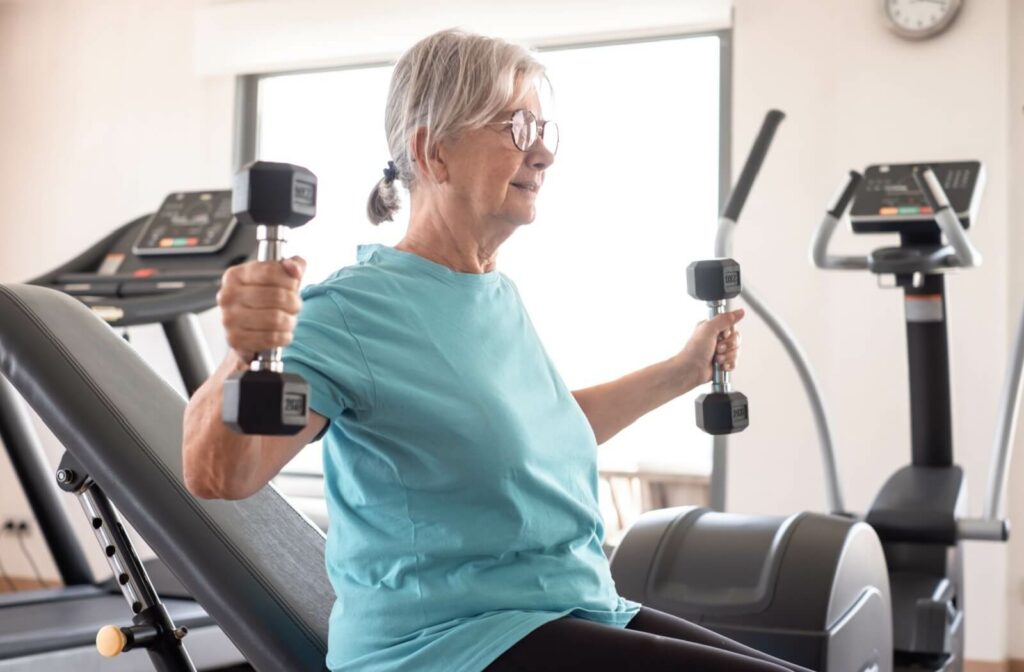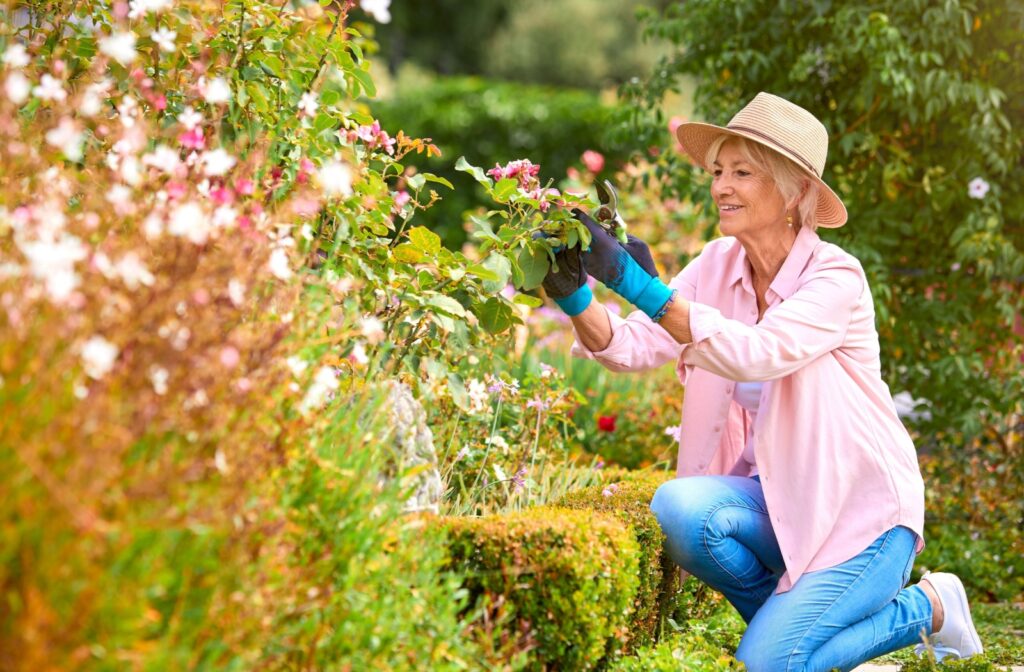Staying active is key to living a healthier, more independent life as you age. But how much physical activity do seniors really need?
Seniors should aim for 150 minutes of moderate-intensity aerobic activity per week, though this depends a bit on personal abilities and goals. Regular movement—whether it’s walking, stretching, or strength training—can make a big difference in a person’s health. With the right balance, exercise can boost energy, improve mobility, and support your well-being.
Why Physical Activity Matters for Seniors
Physical activity has a ripple effect on every area of our lives. It helps us with:
- Sustaining energy
- Keeping our minds sharp
- Fostering meaningful connections with loved ones
Regular exercise can minimize the risk of chronic conditions like heart disease, diabetes, and osteoporosis, making day-to-day life more enjoyable and less stressful.
Many seniors find that staying active helps improve sleep, reduces feelings of anxiety, and lifts their mood. Whether it’s a gentle walk through the park or a lively class at a senior living community, regular movement is the key to thriving as we age.
Recommended Physical Activity Guidelines for Seniors
The good news? You don’t have to spend hours in the gym! Health authorities suggest that seniors should try to get:
- 150 minutes of moderate-intensity aerobic activity per week. This could look like a brisk walk or a casual bike ride.
- 2 or more days of strength-training exercises that work on major muscle groups (like legs, core, and arms).
- Regular balance and flexibility exercises to reduce the risk of falls and ensure daily tasks remain manageable.
If 150 minutes feels intimidating, start small. Even 10-minute sessions of movement make a difference, and every bit counts toward your goal!
Different Types of Physical Activity
The key to a fitness routine that sticks? Variety. Different types of exercises target different parts of our health.
Aerobic Exercises
Aerobic activity gets your heart pumping and boosts endurance. Good aerobic options include:
- Walking
- Swimming
- Cycling
- Dancing
Even gardening or playing with grandchildren can fall into this category. The goal is to elevate your heart rate, but in a way that still allows you to hold a conversation—no need to overdo it.
Strength Training
Maintaining muscle strength is important for keeping up with daily tasks, from carrying groceries to climbing stairs. Strength training activities might include:
- Light weightlifting
- Resistance band exercises
- Bodyweight exercises like squats or wall push-ups
No fancy equipment? No problem. Everyday objects like water bottles can act as weights to help build strength.
Balance & Flexibility Exercises
Improving balance can significantly reduce the chance of falls, a major concern for aging adults. And don’t underestimate flexibility—it helps maintain range of motion in your joints. Activities to try include:
- Yoga
- Stretching routines
- Tai Chi
These gentle movements not only improve physical function but can also help reduce stress and promote mindfulness.
How to Incorporate Exercise Into Daily Life
Exercise doesn’t always have to look like a formal workout. Here’s how to sneak movement into your daily routine:
- Turn household chores into a workout by briskly vacuuming or gardening.
- Use step counters or fitness trackers as motivation to hit daily movement goals.
- Schedule time for yourself. Whether it’s a walk after lunch or a morning stretching session, treat movement as an essential appointment.
- Invite friends for a stroll instead of meeting for coffee—it’s a great way to blend socializing with physical activity.
Consistency over perfection is what matters. Finding moments to move during the day adds up over time.

Health Benefits of Staying Active as You Age
Regular exercise provides a number of health benefits:
- Boosts mental sharpness. Regular movement enhances brain health, improving memory and reducing the risk of cognitive decline.
- Supports independence. Maintaining mobility allows you to confidently complete everyday tasks and live life on your terms.
- Enhances mood. Exercise naturally releases feel-good chemicals, like endorphins, which can help combat feelings of sadness or loneliness.
- Strengthens immune function. Staying active keeps your body resilient and better prepared to fight off illness.
Adapting Physical Activity for Different Abilities
Physical limitations or chronic conditions don’t have to stand in the way of staying active. The key is modifying exercises to suit your needs:
- Seated exercises. Many movements can be done from a sturdy chair, offering support while strengthening muscles.
- Lower-impact options. For those with mobility challenges, exercises like arm raises, stretches, and gentle yoga provide a fantastic way to stay moving.
Remember, it’s always a good idea to consult with your doctor or a fitness professional when trying something new to make sure it’s safe and right for your body.
Signs of Overexertion & Staying Safe While Exercising
While exercise is beneficial, listening to your body is equally important. Watch for signs of overexertion, such as:
- Unusual fatigue or shortness of breath
- Dizziness or lightheadedness
- Muscle pain beyond normal soreness
To stay safe:
- Start slowly, especially if you’re trying a new activity.
- Stay hydrated and wear comfortable, appropriate footwear.
- Warm up before you begin and cool down after.
- Stop immediately if something doesn’t feel right, and seek advice if needed.
Physical activity should be energizing, not overwhelming. The goal is to feel better, stronger, and more in control—not to push yourself too far.
Add Joy & Movement to Your Day
Staying active as you age doesn’t have to feel overwhelming. By embracing small, enjoyable movements every day, you’ll improve your physical strength, preserve your mental clarity, and enjoy a greater sense of fulfillment. Start small, try a variety of activities, and focus on making exercise something you look forward to.
Need inspiration or guidance? Book a tour with Meadow View Senior Living to explore our community activities or talk with friends about activities they enjoy. It’s never too late to prioritize your health and get moving—your future self will thank you.



